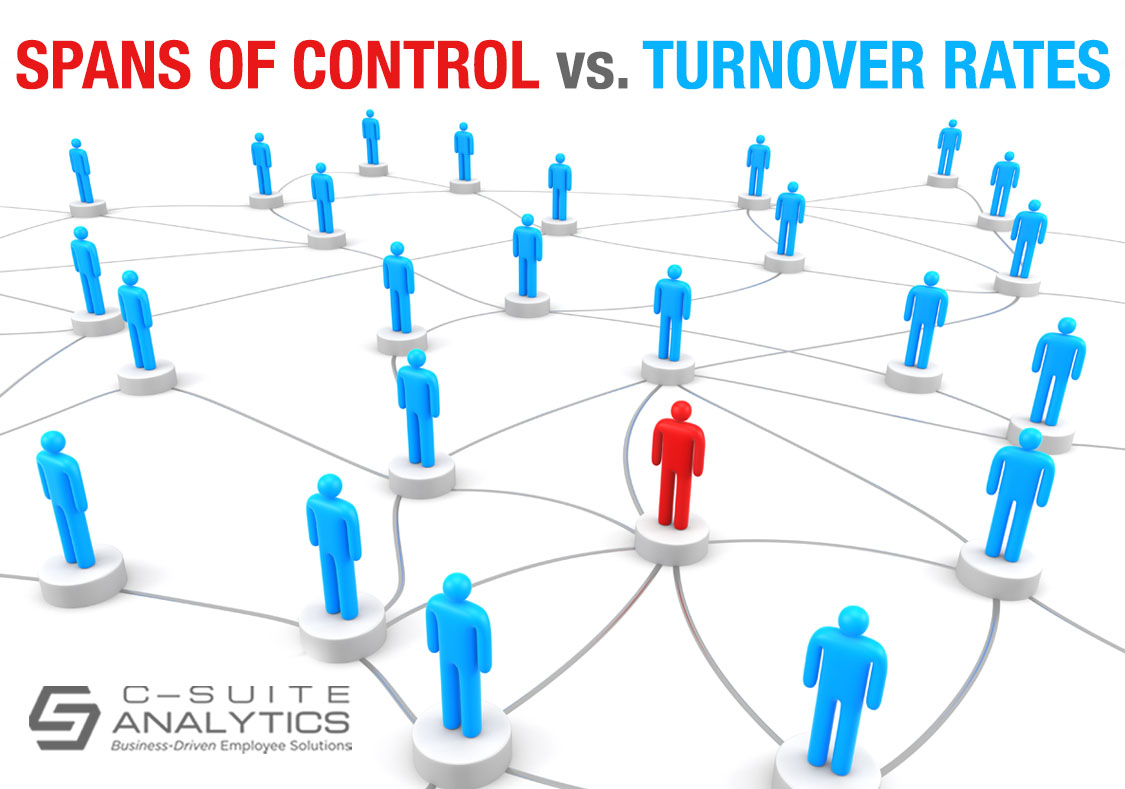Span of control is one of the most overlooked yet powerful predictors of employee turnover. Learn how reducing manager head counts can drastically improve retention—especially in high-turnover industries like healthcare, manufacturing, and customer service.
How Much Do Managers’ Spans of Control Influence Turnover Rates?

Most executives can quote their company’s employee turnover rates or get close, but there are related metrics that are sound asleep in their organizations that impact turnover invisibly. One of these never-considered metrics is spans of control. Spans of control are the number of employees assigned to each manager on organization charts.
This is on my mind today because we are helping several large hospital companies cut nurse turnover, but this malady is not in any way confined to just hospitals. Read on if you are concerned with turnover in manufacturing, call centers, or with entry-level or skilled workers in any industry.
Hospitals are reeling from the one-two punch of COVID-19’s destruction on staff morale and energy, along with their revenue-depleting decisions to cut back on elective surgeries. Although understanding just how much money hospitals make has always been a rough road, 2020 was a time when just holding on has been challenging for CEOs. And then along comes the easy-to-understand onslaught of nurses who can see just enough daylight to rethink their lives and career choices. Unfortunately, worrying about hospital staff turnover today is well-placed worry.
So let’s take data we know from the correlation of staff turnover to spans of control and apply that data to other industries as well. For starters, one study that examined the relationships between span of control and nurse turnover concluded in part…
“Span of control was the strongest predictor of staff turnover. Units with managers who had a wide span of control had higher levels of staff turnover…The major contribution of this study is its finding that no leadership style can overcome a wide span of control.”[i]
Sit still for a moment and re-read that opening sentence, Span of control was the strongest predictor of staff turnover. This means how much you pay your nurses, how much you recognize them, how much you rethink their schedules…all of the endless number of things you do to cut your turnover or improve employee engagement are in the minor leagues compared to your spans of control. And who is to say this finding is confined to just nurses?
This makes sense considering that the #1 reason employees stay or leave…or engage or disengage…is how much they trust their boss. How can you trust your boss if you never see your boss? Or as nurses consistently tell me when I ask when was the last time you talked with your manager, their answer is, “The last time I screwed up”. That’s hardly a good way to improve staff retention or employee engagement.
But here is additional data that thickens the plot. As our clients know, we begin each engagement by conducting a cost study for how much turnover costs the organization when employees exit.
Here is a sample of studies we’ve done:
• Nurse: $42,131
• Truck loader/unloader: $4,955
• Call center representative: $29,447
• Physician: $225,808
• Truck driver: $21,221
• Software engineer: $131,290
• Forklift driver: $10,742
• Manufacturing entry-level: $5,518
Might any of these jobs look familiar to you?
The average number of nurse direct reports is 74.[ii] While this number is certainly stunning, the direct report numbers for manufacturing, food processing, and call centers is often 30 and above. In some cases, organizations have inserted an hourly worker for a half-supervisor role in-between with job titles like charge nurses or team leads. For our client companies, the true test for whether these in-between, semi-leaders are true people leaders is when we ask if they should be accountable for employee retention goals…and usually the answer is no, that these are helpers but not supervisors.
Conclusion: Those massive spans of control are just as big as they look.
There needs to be a new-found mathematical equation that says (1) if you have high turnover that impacts productivity and (2) you have high spans of control and (3) you have a clue about how much turnover costs, then (4) maybe you should rethink your high spans of control.
So back to nursing, might it make sense to replace your charge nurses with qualified supervisors who can reduce your spans of control by half or more? Even if you have to bump their pay up $10,000 per year, how much turnover can you reduce when each exit costs $42,131 per hit? Or the same with call centers where each exit costs nearly thirty thousand dollars? Even those jobs with the lowest turnover cost on our list represent workers who deserve a supervisor who has time to build a relationship with them.
At some point organizations must decide if all of their employees need the usual individual coaching and the assurance of one-on-one relationships with their supervisors…or if those employees who report to managers with high spans of control are the closest human adaptation of robots who come to work, do their work, and go home…and human intervention only occurs if their work is off track.
Knowing turnover’s cost is the first step to doing the right thing, to rethink spans of control so all employees are given a fair chance to develop a trusting relationship with their boss…which leads to cutting turnover and improving engagement as well.
Dick Finnegan is SHRM’s top-selling author and top-rated webcast presenter. Please email your comments to me at DFinnegan@C-SuiteAnalytics.com. You are also welcome to forward this blog to anyone you believe would find it helpful.
[i] https://stti.confex.com/stti/inrc16/techprogram/paper_23430.htm
[ii] https://uknowledge.uky.edu/cgi/viewcontent.cgi?article=1202&context=dnp_etds



